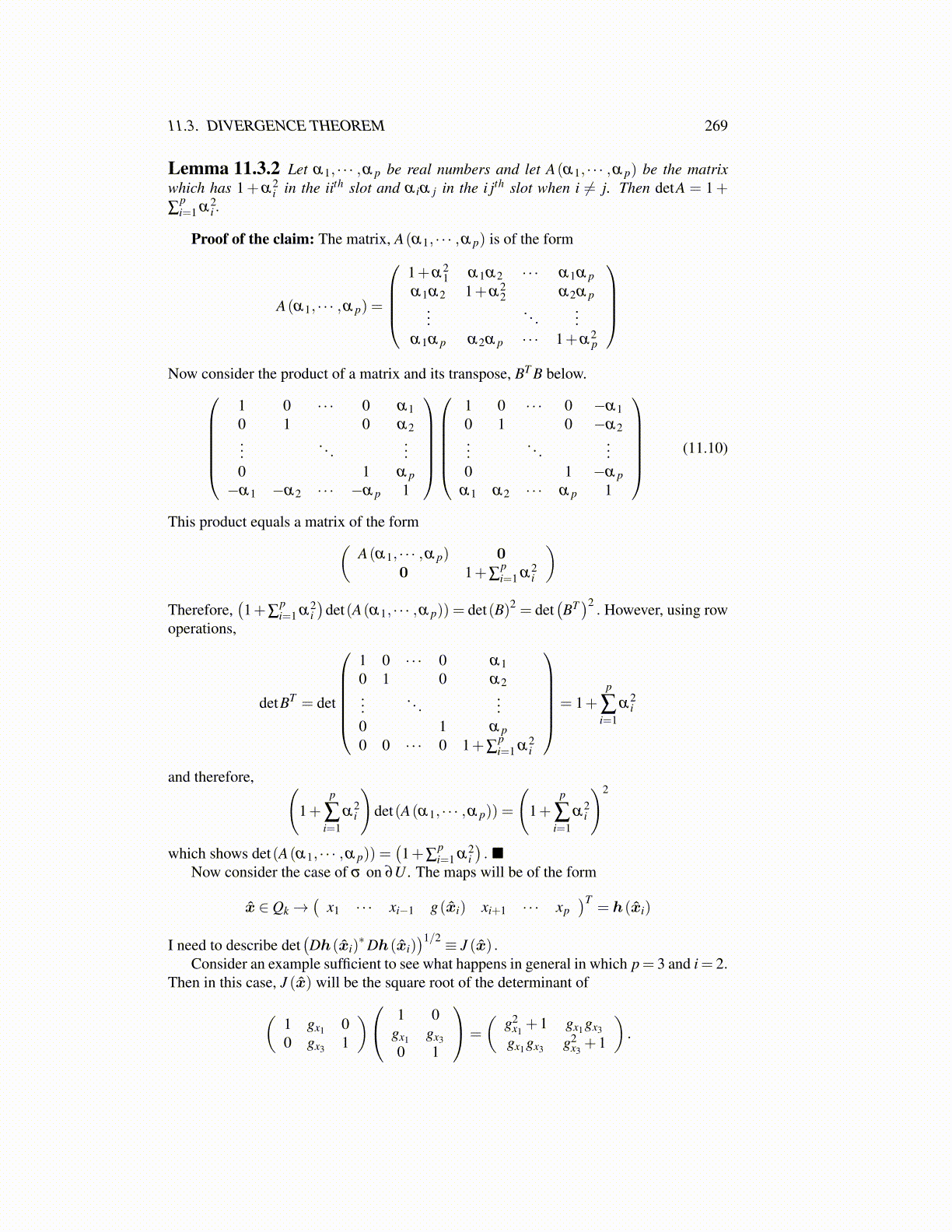
11.3. DIVERGENCE THEOREM 269
Lemma 11.3.2 Let α1, · · · ,α p be real numbers and let A(α1, · · · ,α p) be the matrixwhich has 1+α2
i in the iith slot and α iα j in the i jth slot when i ̸= j. Then detA = 1+∑
pi=1 α2
i .
Proof of the claim: The matrix, A(α1, · · · ,α p) is of the form
A(α1, · · · ,α p) =
1+α2
1 α1α2 · · · α1α pα1α2 1+α2
2 α2α p...
. . ....
α1α p α2α p · · · 1+α2p
Now consider the product of a matrix and its transpose, BT B below.
1 0 · · · 0 α10 1 0 α2...
. . ....
0 1 α p−α1 −α2 · · · −α p 1
1 0 · · · 0 −α10 1 0 −α2...
. . ....
0 1 −α pα1 α2 · · · α p 1
(11.10)
This product equals a matrix of the form(A(α1, · · · ,α p) 0
0 1+∑pi=1 α2
i
)Therefore,
(1+∑
pi=1 α2
i)
det(A(α1, · · · ,α p)) = det(B)2 = det(BT)2. However, using row
operations,
detBT = det
1 0 · · · 0 α10 1 0 α2...
. . ....
0 1 α p0 0 · · · 0 1+∑
pi=1 α2
i
= 1+p
∑i=1
α2i
and therefore, (1+
p
∑i=1
α2i
)det(A(α1, · · · ,α p)) =
(1+
p
∑i=1
α2i
)2
which shows det(A(α1, · · · ,α p)) =(1+∑
pi=1 α2
i). ■
Now consider the case of σ on ∂U . The maps will be of the form
x̂ ∈ Qk→(
x1 · · · xi−1 g(x̂i) xi+1 · · · xp)T
= h(x̂i)
I need to describe det(Dh(x̂i)
∗Dh(x̂i))1/2 ≡ J (x̂) .
Consider an example sufficient to see what happens in general in which p= 3 and i= 2.Then in this case, J (x̂) will be the square root of the determinant of
(1 gx1 00 gx3 1
) 1 0gx1 gx30 1
=
(g2
x1+1 gx1gx3
gx1gx3 g2x3+1
).